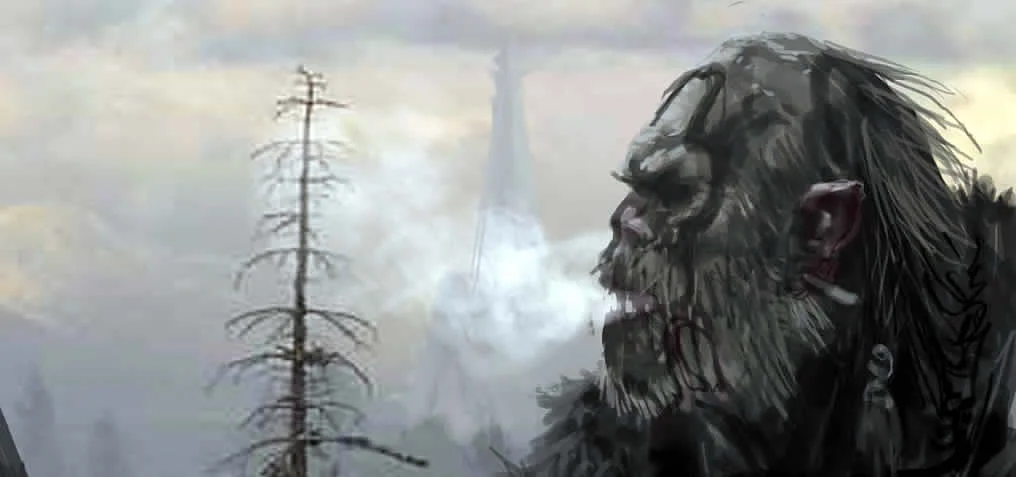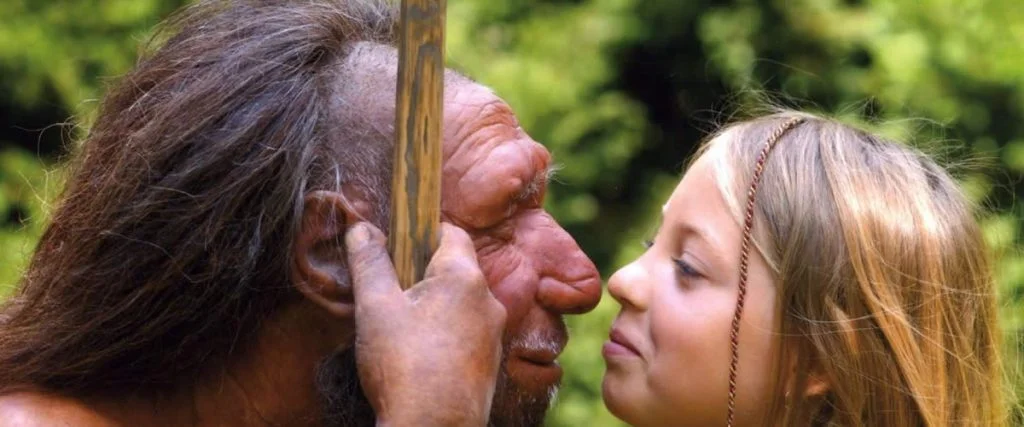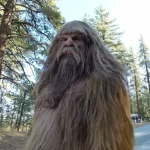Page Contents
Neanderthals Are Not Part Of The Ancestry Of Man
Did humans evolve from Neanderthals? The most hotly debated issues in the study of human origin (paleoanthropology) focus on the origin of modern humans, Cro-Magnons or homo sapiens sapiens, and their relationships with Neanderthals. Did man evolve from Neanderthals?

Roughly 300,000 years ago, the Old World was occupied by a morphologically diverse group of hominoids (any primate of the family Hominidae). In North America, Africa and the Middle East there were Homo sapiens; in Asia, Homo erectus; and in Europe, Homo neanderthalensis. By 130,000 years ago, Neanderthals had all become so anatomically distinct, that they were classified as a separate species – Homo neanderthalensis.
Then, approximately 50,000 to 60,000 years ago our ancestors suddenly appeared on this planet. And based on evidence found at numerous sites, instead of living cooperatively with the Neanderthals – who’d been at the top of the planet’s food chain for 300,000 years – humans exterminated them globally within 25,000-30,000 years. Humans are still exterminating apes.
Are All Neanderthals Extinct?
To date, no Neanderthal skeletons or specimens more recent than 25,000 years ago have ever been found. However, that does not mean that Neanderthals are necessarily extinct. In fact, there’s every possibility that the creatures we identify as the Abominable Snowman, Yeti, Sasquatch and Bigfoot are actually Neanderthal survivors.
Are Neanderthals The Ancestors Of Humans?
No. Neanderthals are not the ancestors of humans despite the many hoaxes and false claims to attempt to convince the world that we are. To date, though some unproven claims have been accepted by science, none have been found to be true when subjected to intense scrutiny. The reason that all claims of humans descending from apes and/or Neanderthals cannot be proven, is simply that we did not evolve on Earth.

What Happened To Neanderthals?
There was an ongoing debate as to whether it was climatic change or our sudden appearance that resulted in the demise of the Neanderthals by placing Neanderthals in direct competition with our ancestors for resources. However, studies have since concluded evidence clearly indicates that our ancestors exterminated Neanderthals, not the climate. Bones of both humans and Neanderthals have been found together in ancient grave sites, but were the result of fatal confrontation not friendly cohabitation.
Evolution Anatomical Charts Wrong
Currently accepted evolutionary anatomical charts depict humans evolving from ape to modern man in a progression of height from the smallest to the largest. But according to evolutionist claims, they can’t possibly be right. For if evolutionists were right, the forms just before modern man would be great apes and Neanderthals, both of which would have been significantly greater in size compared to modern man; to the point of meeting the description of what the ancient people called ‘giants’.

Artistic Inaccuracies
NOTE: Many of the academic community have inaccurately portrayed the earliest artists as being Neanderthal, but humans had exterminated most Neanderthals thousands of years before most the art was created. Nor has has a site of Neanderthal ever art been found. The oldest ‘prehistoric’ cave drawings and paintings, petroglyphs and other forms of stone art were determined to be done well after our arrival. Recently a newly discovered cave drawing was tentatively determined to be approximately 40,000 years old, nearer the time of our sudden appearance on Earth and the end of Neanderthal reign. However, independent testing has yet to confirm testing accuracy.
Proof Neanderthals Are Not Human Ancestors
 Evolutionists celebrated wildly when the skeleton of what was thought to be a child was unearthed in Lapido, Portugal in 1999. Testing dated the remains to be from around 25,000 years ago, and it was said that the remains showed a mixture of Neanderthal and modern features. This suggested that it may have been a hybrid, possibly even the proverbial ‘missing evolutionary link’. But evolutionary hopes were dashed when small fragments of DNA extracted from three different specimens of the creature revealed that it was not closely related to any present day human populations.
Evolutionists celebrated wildly when the skeleton of what was thought to be a child was unearthed in Lapido, Portugal in 1999. Testing dated the remains to be from around 25,000 years ago, and it was said that the remains showed a mixture of Neanderthal and modern features. This suggested that it may have been a hybrid, possibly even the proverbial ‘missing evolutionary link’. But evolutionary hopes were dashed when small fragments of DNA extracted from three different specimens of the creature revealed that it was not closely related to any present day human populations.
The DNA extracted from the ribs of a Neanderthal infant buried in southern Russia 29,000 years ago, was also found to be too distinct from modern human DNA to be related. “There wasn’t much, if any mixture, between Neanderthals and modern humans,” said William Goodwin of the University of Glasgow, UK. “Though they co-existed, we can’t find any evidence of genetic material being passed from Neanderthals to modern humans.” The work published in the journal Nature, contradicts evidence from ancient remains of the creature found in Portugal, evidence later proved wrong.
The bones from the Russian Neanderthal infant were very well preserved and the child must have been among the last of the Neanderthals as they died out about 30,000 years ago. Research, by Dr Goodwin, along with Swedish and Russian colleagues, agrees with the findings of the first analysis of Neanderthal DNA in 1997. That study of DNA, taken from the first Neanderthal skeleton found in the Feldhofer Cave in Germany in 1856, supports the theory that modern humans replaced Neanderthals rather than evolved from them.
According to Dr. Goodwin, the DNA sequence from the infant was very similar to the specimen from the Feldhofer Cave, proving that there was little diversity among Neanderthals. “If they had been very diverse at the DNA level, they could have encompassed modern humans. The fact that these two Neanderthals are closely related, and not related to modern humans implies that they don’t have the diversity to encompass a modern human gene pool,” said Dr. Goodwin.
Different Ethnic Groups Cannot Be Genetically Identified
DNA comparisons also showed that different ethnic groups cannot be genetically identified (there is no ‘race’ gene in us), nor do we have any direct genetic links to Neanderthals. In a commentary on the research in Nature, Matthias Hoss of the Swiss Institute for Experimental Cancer Research, said the two studies provide the most reliable proof so far of the authenticity of ancient DNA sequences. The similar features of the two samples “argues against the idea that modern Europeans are at least partly of Neanderthal origin,” he said.
Another study by a group of geneticists, coordinated by Guido Barbujani and David Caramelli of the Universities of Ferrara and Florence, showed that a Cro-Magnoid individual who lived in Southern Italy 28,000 years ago was a modern European, genetically as well as anatomically. The Cro-Magnoid people briefly coexisted in Europe with other humanoids, the Neanderthals, whose anatomy and DNA were clearly different from ours. However, obtaining a reliable sequence of Cro-Magnoid DNA was technically challenging. “The risk in the study of ancient individuals is to attribute to the fossil specimen the DNA left there by archaeologists or biologists who manipulated it,” Barbujani says. “To avoid that, we followed all phases of the retrieval of the fossil bones, and typed the DNA sequences of all people who had any contact with them.”
The researchers wrote in the newly published paper: “The Paglicci 23 individual carried a mtDNA sequence that is still common in Europe, and which radically differs from those of the almost contemporary Neanderthals, demonstrating a genealogical continuity across 28,000 years, from Cro-Magnoid to modern Europeans.” The results demonstrate for the first time that the anatomical differences between Neanderthals and Cro-Magnoids were associated with clear genetic differences.
 So, it turns out that Neanderthals, who’d lived at the top of Earth’s food chain for nearly 300,000 years are not the ‘ancestors’ of modern humans. Neanderthals were distant relatives and ‘victims’ of modern humans. Even though they were larger, stronger and had bigger brains than our ancestors, they were no match for our skills and greed. This leads one to ask, “Where did our superior intelligence come from?” Well, as you’ve read, a great deal of our intelligence isn’t the result of evolution as we’ve been led to believe, but rather is the direct result of genetic memory. And our intelligence has garnered a lot of attention from other intelligent beings. Beings we call aliens and who visit us in UFOs. Beings who have been watching us for a very long time. Who are they? What do they want?
So, it turns out that Neanderthals, who’d lived at the top of Earth’s food chain for nearly 300,000 years are not the ‘ancestors’ of modern humans. Neanderthals were distant relatives and ‘victims’ of modern humans. Even though they were larger, stronger and had bigger brains than our ancestors, they were no match for our skills and greed. This leads one to ask, “Where did our superior intelligence come from?” Well, as you’ve read, a great deal of our intelligence isn’t the result of evolution as we’ve been led to believe, but rather is the direct result of genetic memory. And our intelligence has garnered a lot of attention from other intelligent beings. Beings we call aliens and who visit us in UFOs. Beings who have been watching us for a very long time. Who are they? What do they want?